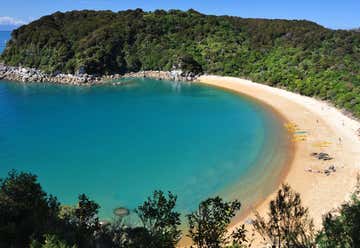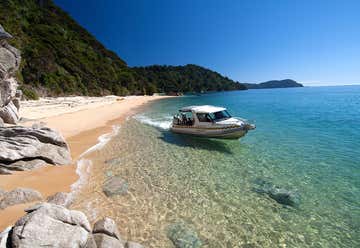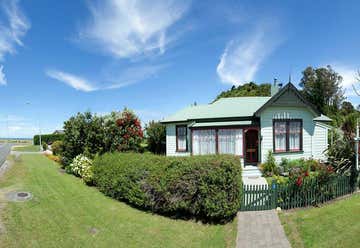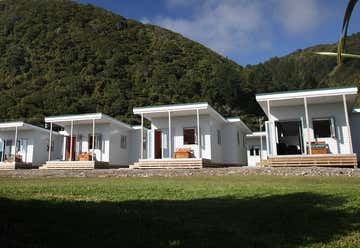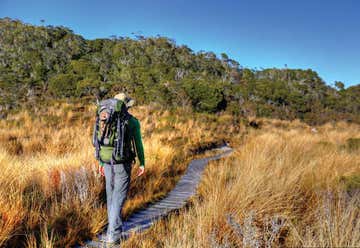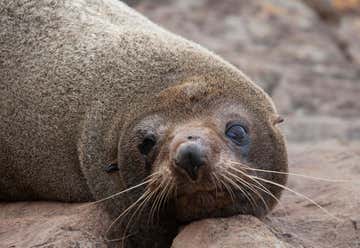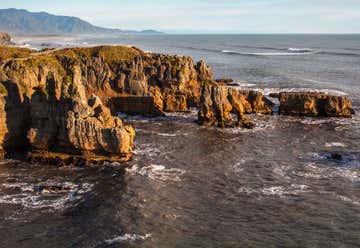It seems fortuitous to start your epic west coast adventure of 1000+km of the rugged west coast of the South Island in New Zealand’s sunniest city. Can Nelson’s 300+ days of sunshine come along for your ride too? The stunning route down to Invercargill reveals dramatic mountains, dense bushland, native forest and awe inspiring glaciers. The area is sparse, even by NZ standards, but that doesn’t mean that it’s scant on things to do. We’ve packed impressive hikes, daring activities, idyllic vistas and quintessentially New Zealand homesteads into this 13-day itinerary.

"Hokitika Gorge"
Nelson city offers brilliant sunshine, delectable eateries and a vibrant arts and culture scene. Start the day on a creative vibe at the arts and heritage district. Follow this visit with the innovative world of wearable art and classic cars at the WOW Museum.
Splurge on lunch at the popular Hopgoods – the duck confit and chocolate mousse are highly recommended – before walking it all off on the short Centre of New Zealand walk.
Depart Nelson for Abel Tasman National Park, ready for your two-day exploration of the Golden Bay. Accommodation close to the park fills up fast so also check Airbnb as many smaller – but still fabulous - places are listed there.
Abel Tasman National Park is one of New Zealand’s most famous reserves. The glorious 51km coastal track winds its way across ridges overlooking the impressive sandy beaches of the Tasman Bay and is best seen on foot or from the water.
See the highlights in two days in a couple of ways - either make a base from Marahau and spend one day exploring on foot, the other on kayak; or opt for the 2-day Abel Tasman Adventure Journey that Aquataxi put together. It’s unguided so you can go at your own pace but they take care of the water taxis - including a fur seals side trip - and an overnight stay on the floating accommodation of Aquapackers. Your tramping (Kiwi speak for hiking) time today is around 5-6 hours from Onetahuti to Anchorage. If you arrive in time, talk to the Aquapackers team about renting a kayak before sundown.
Rise early today to continue your Abel Tasman journey, back to Marahau, passing iconic Split Apple Rock on the way. This relatively easy 12km tramp can be completed in less than four hours, ensuring you can grab delicious fish, chips or a burger at the famed Fat Tui food truck in Marahau (please note they shut up shop over the winter months.)

"Aquapackers " — Photo Credit: Aquapackers
For an audacious end to your time in this region, head to Farewell Spit, the northernmost point of the South Island and largest sandbar in the world. This bird sanctuary and wetland of international importance presents open sea on one side, a sheltered bay on the other and over 30km of sand dunes in-between. It is home to many migratory wading birds who travel round trips of up to 29,000 kms per annum (and can be seen from September to April) as well as New Zealand’s newest gannet colony. Farewell Spit is only accessible on foot (or by 4WD tour) so park up at Triangle Flat car park and head out on Split Track Circuit, a 6km or 12km hike onto the spit over the awesome golden dunes.
Never had a dice with the law? Keep it that way but enjoy the thrills of sleeping in one of the four old police station rooms at the Station House Motel. Book early as these rooms get booked up early.
Before reaching the west coast today, it’s worth a detour into the Nelson Lakes National Park. The glacier-carved waters of Rotoiti Lake make a fine picnic location and there are plenty of short walks to access greater viewing spots. (But please avoid Mt Robert car park as there have been a few vehicle thefts.)
Follow the road alongside Lake Rotoiti as it makes its way to Buller River and the famed Buller Gorge - which has proved a challenge to explorers and tradesman over the years, until NZ’s longest swing bridge - 110m - solved the problem. You can walk across it for $10, or if the thrills of the bridge aren’t enough, consider the Supaman ride for a daring harnessed flight.
Gateway to the West Coast, the town of Westport flourished - at first as a gold mining town and now for coal mining and tourism. Base yourself for the next two nights in lively Westport in either our accommodation picks. Our first recommendation is the Art Hotel.
Alternatively head north for a wild stay at Miners on Sea. Wherever you sleep, make time on your itinerary to pop into Westport’s PR’s Café for their delicious banoffee pie.
Not every visitor that tackles the South Island’s west coast makes it to Karamea but it’s worth your time. Lush rainforest, 35-million-year-old limestone caves, and ancient Maori culture make it a captivating destination. Visit the limestone formations of the Oparara Arch – the largest in the Southern Hemisphere – and the Honeycomb Caves where untouched bushland preserved the bones of the extinct Moa bird. The 15km length of tunnels make a guided walk worthwhile here, and can be arranged at the Karamea information centre.

"Karamea Information & Resources Centre "
Karamea is the southern entrance to the 82km Heaphy Track – one of New Zealand’s nine great walks. The tramp traditionally takes four days through rainforest, tussock grasslands, craggy mountains and palm-fringed shoreline. For the perfect teaser, just hike the 3km Heaphy Track section from Kohaihai to Scotts Beach to gain a tiny taste of this ancient Maori trail.
Head South from Karamea, past Westport, to reach Cape Foulwind, because for great seal appeal, Cape Foulwind is a must! This is New Zealand’s most accessible seal colony and they visit here all year-round (although the bull seals arrive here to mate from October to March and this is also the time when the pups are at their most playful). Therefore a pit stop here is a no brainer. There is a 10-minute walk to the viewing platform, or a 3-hour return trip walk as an alternative if you feel like finding out why Captain Cook coined this Capes name. If mining holds interest, stop by Denniston en-route to Cape Foulwind, or if you are a surfer, then the cafe end of Tauranga Bay is the best surf in the area.
Who doesn’t love pancakes? Paparoa offers an alternative kind - the pancake rocks of Punakaiki in Paparoa National Park. At a whopping 30 million years old, this natural work of art is punctuated by the rushing plumes of water emitting from the blowholes dotted throughout. Take the 45-minute Dolomite Point walk to see the best of them.



